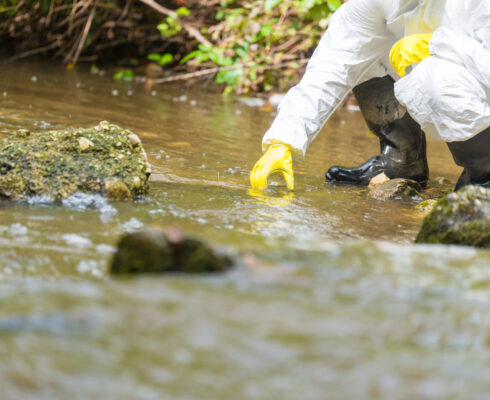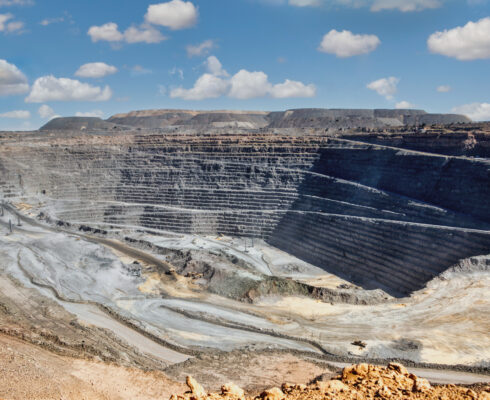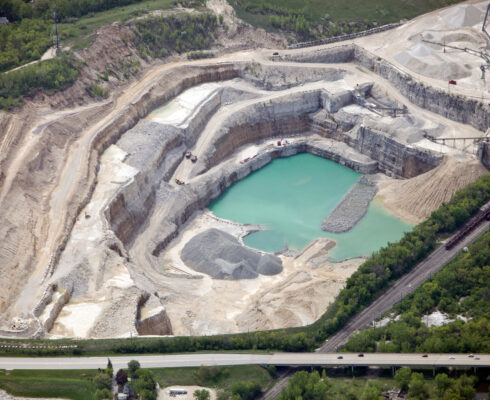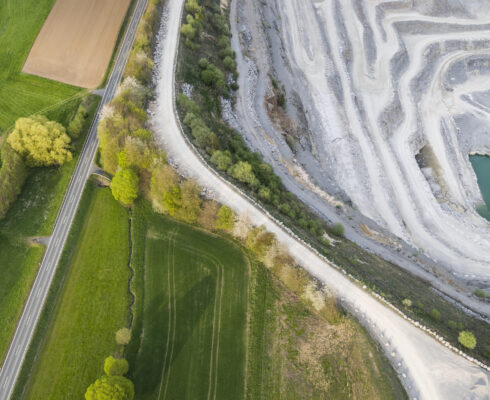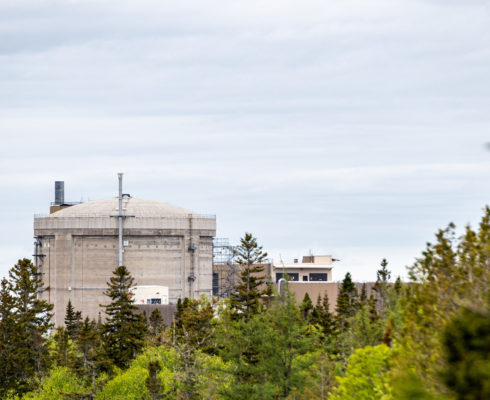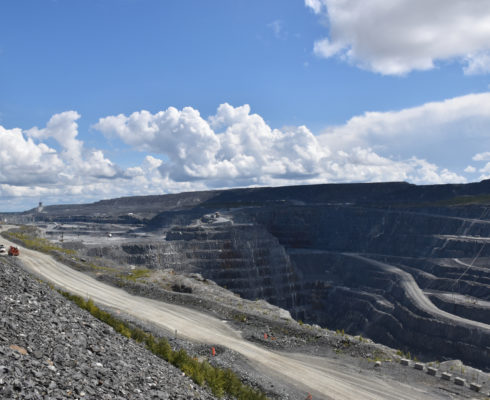These previously developed sites are called brownfields and may be contaminated from activities that have occurred historically or are currently taking place. It is estimated that there are more than 30,000 brownfield sites across Canada, providing significant opportunity to developers and real estate investors to capitalize on underutilized and often undervalued properties in high demand areas.
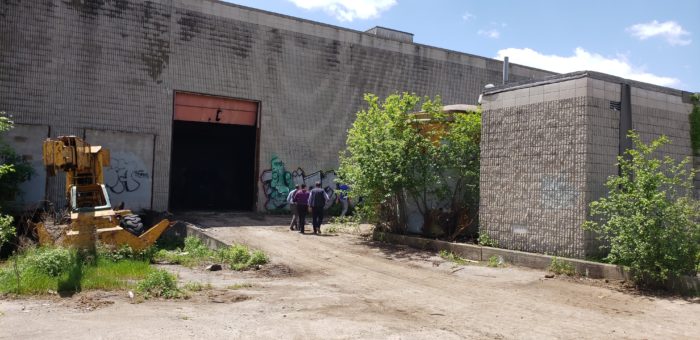 It's critical to understand existing site conditions at the early stage of a brownfields redevelopment project.
It's critical to understand existing site conditions at the early stage of a brownfields redevelopment project.
During the development of these sites, any identified contamination may be required to be addressed through regulatory or financial instruments. To reduce the contamination, remedial activities such as dig-and-dump of contaminated soils or chemical treatment of contaminated groundwater have been used for decades.
Increasingly, remedial approaches are being combined with (or in some cases, eliminated by) site-specific risk assessments, which evaluate the environmental risks and identify appropriate risk management measures. Application of risk assessment is an increasingly cost effective and popular approach to the safe redevelopment of contaminated land – without the need for extensive remediation.
Let’s take a deeper look at brownfield redevelopment and see how the four underlying principals of Ecometrix’ Environmental Intelligence™ – namely thought, application, solution, and communication – are used to enhance a risk-based approach to site contamination.
Recognizing the benefits of a risk-based approach to brownfield redevelopment
Developers and investors may be reluctant to take on a contaminated property due to the uncertainties regarding added cost and time to get their projects to market. “Often the traditional remediation techniques cost more money, but save time,” explains Dr. Derek Hillis, Senior Environmental Scientist at Ecometrix.
“The risk assessment approach is considerably cheaper, but it takes more time because you have to go through a prescribed regulatory review process. It's cost versus time. As any developer will tell you, the longer something sits idle, there's an opportunity cost there.” That’s where a qualified and experienced partner comes in. Understanding the existing site conditions and the risk management measures that can be applied to address any undesirable conditions is critical at this early stage.
Communication and understanding the development goals are key
Ecometrix focuses on communication between all parties as a critical task to be completed before doing anything else and as a task integrated throughout the project’s life. Brownfields redevelopment projects have the greatest chance of success when property owners, developers, environmental consultants, and regulators are all aware of the same development goals, timelines, and restrictions. Part of our role as risk assessors is to facilitate and maintain open lines of communication between all parties involved.
Early communication is critical to determine the vision for the site’s development, what type of risk management measures will be acceptable based on that vision, and what restrictions may be unacceptable as it will impact the future occupancy, sale, or value of the development project.
“We recommend speaking to a risk assessor early on in the redevelopment planning process,” explains Winnie Lee, former Environmental Risk Assessor at Ecometrix.
“Once contamination has been identified, we can help identify additional data requirements to support a risk assessment, and these data can be collected during the remainder of the site characterization process, potentially saving time and expense from remobilizing to the site to complete additional sampling programs in the future.
"We can also give developers and land owners an idea of what risk management measures they may need, so they can factor this into their building design and excavation depth before they finalize their site plan. That way, we can help our clients to decide whether the risk assessment process is their best option, and to develop realistic goals for the site.”
The risk assessment approach is considerably cheaper, but it takes more time because you have to go through a prescribed regulatory review process.
Application of the risk-based approach
Once the site conditions, future property use, and constraints are understood, the application of the risk-based approach to the brownfield development is refined based on whether the risk assessment is to meet regulatory requirements or for due diligence purposes.
Regulatory risk assessments are extremely prescriptive — both in terms of the technical requirements and administrative process — and are typically driven by a change to a more sensitive land-use (i.e., from industrial to residential) or a municipal request.
Due diligence risk assessments are often completed using similar technical guidance as regulatory risk assessments, but do not follow the administrative process and offer more leeway in how they are completed (i.e., it may only contain a human health risk assessment in an urban/built environment). Due diligence risk assessments are often completed in property transfers to identify environmental liabilities before the purchase of a property or as a condition of financing.
“In our role as risk assessors, we begin with conservative, generic assumptions to identify risk to human and ecological receptors that will use the site, as well as those on surrounding properties. These conservative assumptions are used to initially identify exposure pathways (such as contact with soil or breathing air) as well as the specific human and ecological receptors to which risk exists, so that we can focus on the key issues,” says Dr. Lara Alves Beese, former Senior Risk Assessment Specialist at Ecometrix.
“Sometimes that is enough to determine that the site can be developed safely. If risk is determined from the conservative assumptions initially evaluated, we then refocus the risk assessment with more realistic assumptions and with more detailed analysis to find defensible solutions for our clients.”
 Brownfields redevelopment projects have the greatest chance of success when property owners, developers, environmental consultants, and regulators are all on the same page.
Brownfields redevelopment projects have the greatest chance of success when property owners, developers, environmental consultants, and regulators are all on the same page.
Using a risk-based approach provides multiple solutions to environmental impacts
Following the application of a risk assessment for a property, site-specific standards are developed. These are less stringent than the default regulatory guidelines, as the specific site conditions are integrated into their development.
The site-specific standards may demonstrate that no risk exists on-site based on the actual conditions of the property. Where contaminant levels exceed the site-specific standard, developers can use these standards to target the removal of contaminants that pose the most risk to people and the environment, and/or determine what risk management measures can be applied to the site to reduce exposures so that a timely and cost effective solution can be determined. Sometimes, the risk evaluation will find that no remediation needs to take place at all.
“Risk assessments are powerful tools for the right site. We assess the risks associated with contamination at the site, and then give recommendations on the appropriate risk management measures so development can proceed in a cost-effective manner that is safe,” says Lara. “Science and technology tell us what is possible, so that the developer can make choices that will ultimately be acceptable by regulators and meet their financial goals.”
The Ecometrix approach
“Ecometrix has a successful track record in the brownfield redevelopment field — understanding the developer's vision for the site, and what their sensitivities are, appreciating the distinct roles and responsibilities of the developer, environmental site assessment (ESA) consultants and the risk assessment team, as well as knowing what regulatory requirements need to be fulfilled to get the project through the review process, are fundamental to a successful risk-based approach for brownfield development,” says Derek.
Explore more of the Environmental Intelligence process in action.
As a means of representing processes in mine waste and other settings, Ecometrix is safeguarding the future with reactive transport modelling.









